
Inspire Me
South Asian Design & Typography
A guide to Letterform Archive’s growing collection of objects from India, Pakistan, and Sri Lanka.
Languages and Scripts in South Asia
A language is a system of communication, a cultural expression, and a lens through which people see the world. In South Asia, where thousands of languages are spoken, language intersects with identity, politics, history, and daily life. Multilingualism is common, and it’s not unusual for individuals to move fluidly between several languages depending on context.
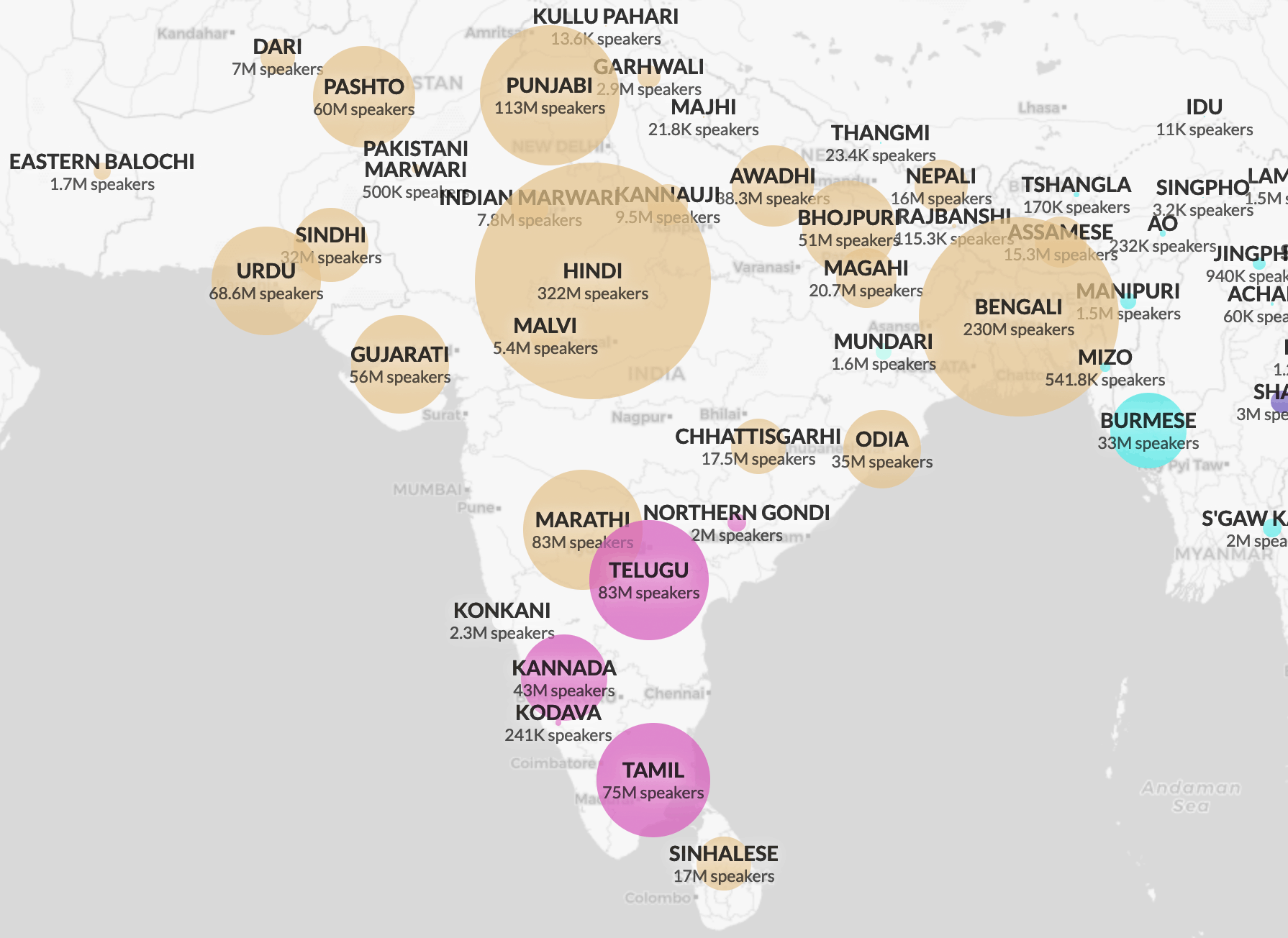
The region is home to four major language families: Indo-Aryan, Dravidian, Austro-Asiatic, and Tibeto-Burman. While each group contains distinct languages, many are interconnected through shared vocabulary, grammar, or writing traditions. This results in a linguistically rich and dynamic environment. Most South Asian countries recognize more than one official language, and several languages have official status in multiple nations.
Typesetting South Asian Scripts
When Western typesetting technologies like Linotype, Monotype, and early digital systems were adapted for South Asian scripts, they faced major challenges. These systems were built for linear, alphabetic scripts like Latin, whereas South Asian scripts are syllabic and compositional — combining consonants, vowel signs, and clusters into a single unit called an akshara.
Fitting these complex structures into Western frameworks often led to poor rendering and loss of legibility. Workarounds, like lettering printed with lithography (as seen in Indian movie posters), or manually breaking and stacking characters, were common. Early digital encodings like ASCII and ISCII also fell short, leading to hacks such as mapping Indic characters onto Latin codepoints, and eventually resulting in the development of Unicode.
These struggles shaped modern font technologies like OpenType and smart layout engines, which now support complex scripts and enrich global and multilingual typography.
Below, you'll find archival resources to help you explore, evaluate, and design for South Asian scripts more effectively.
Glossary
Language Family: A group of related languages that share a common ancestral language.
Script: A set of characters used to write one or more languages (e.g., Devanagari, Tamil, Bengali).
Abugida: AKA alphasyllabary. A segmental writing system, consisting of consonants with inherent vowels. Other vowels are indicated by diacritics or separate letters.
Akshar: The fundamental writing unit in many South Asian scripts. They are visually and phonetically unified. क ख त are the first three in consonants in Devanagari, ক, খ, গ in Bangla.
Inherent Vowel: In most South Asian scripts, each consonant by default includes a vowel sound, typically the short vowel a, or a close variant, depending on the language.
Matra: A mark or sign that modifies the inherent vowel of a consonant. Appears above, below, before, or after the consonant (e.g., कि, के, कु in Devanagari and ಕಾ, ಕಿ, ಕೆ in Kannada).
Conjunct: Two or more consonants combined into a single, often complex, glyph (e.g., क् + ष = क्ष in Devanagari and ക് + ക = ക്ക in Malayalam). Frequency and complexity vary across scripts.
South Asian Script Samples
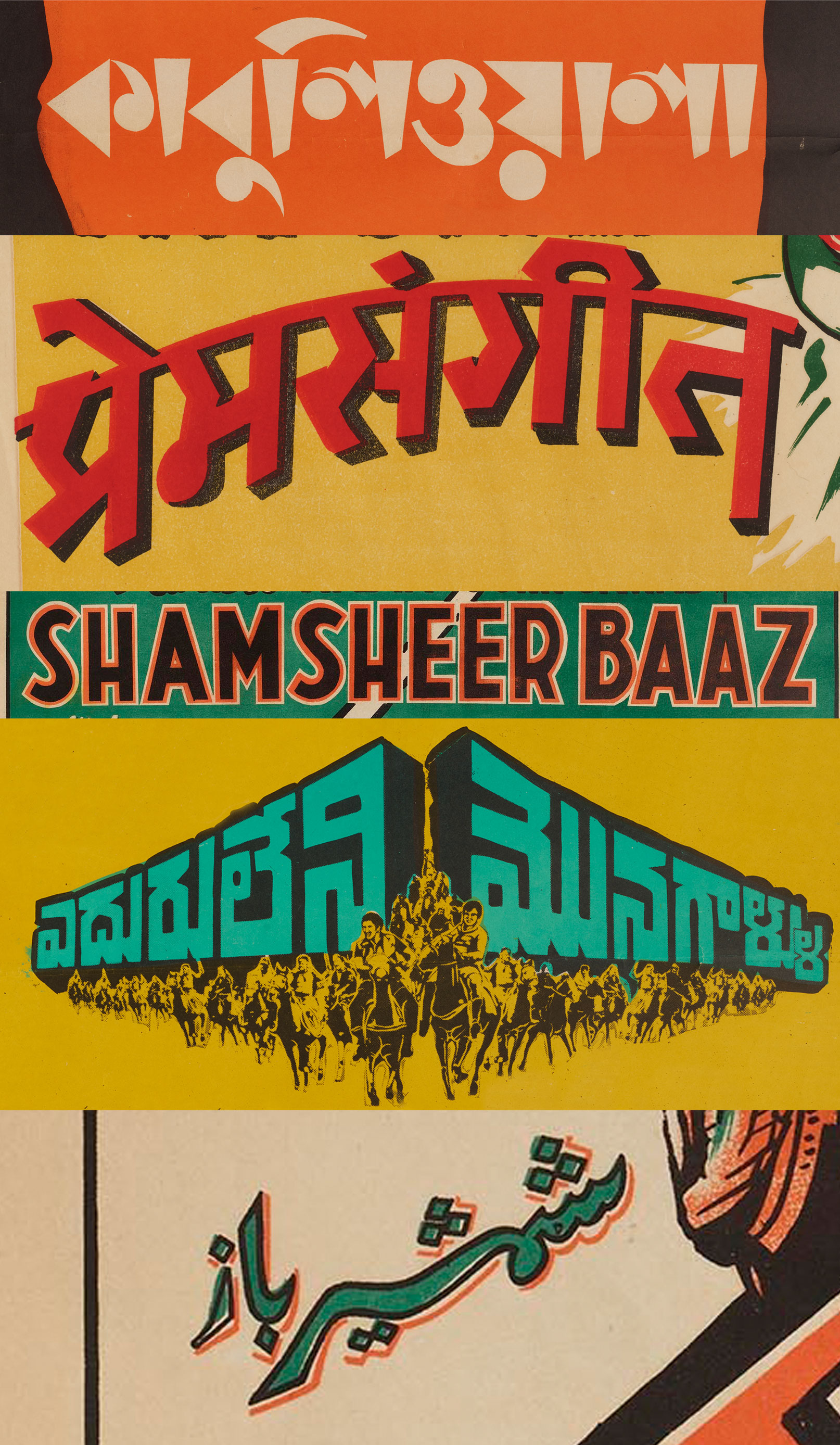
Header image: Indian Calligraphy Diary, R.K. Joshi, 1980.
Looking for something else?
We’re working on Inspire Me pages for other regions and writing systems, including East Asia. Sign up to get notified.
Experience the Archive
To dive deeper into these objects, you can request a self-guided research visit or book a guided onsite tour or even a guided online tour of the collection or exhibition for your team or class.
Learn from the Experts
Our lectures, salons, and workshops provide deep dives into language and region specific topics hosted by skilled practitioners and researchers. Reserve your spot online or catch up with recordings of past events.
Join the Community
The best way to stay connected with the Archive and support the growth of our Asian collection is to join the mailing list and become a member. Be part of our worldwide community, attend exclusive events, and get member discounts.
Read About objects from South Asia at the Archive
South Asia’s typographic landscape is as layered and multilingual as the region itself. From hand-painted shop signs and woodblock prints to metal type and digital fonts, the region’s scripts have taken many material forms. These objects reflect not just language, but also shifts in technology, politics, and identity. From embroidery to lithography, and even some xeroxed palm leaf manuscripts, each typographic object offers a glimpse into how people have communicated, adapted, and designed in pluralistic settings.
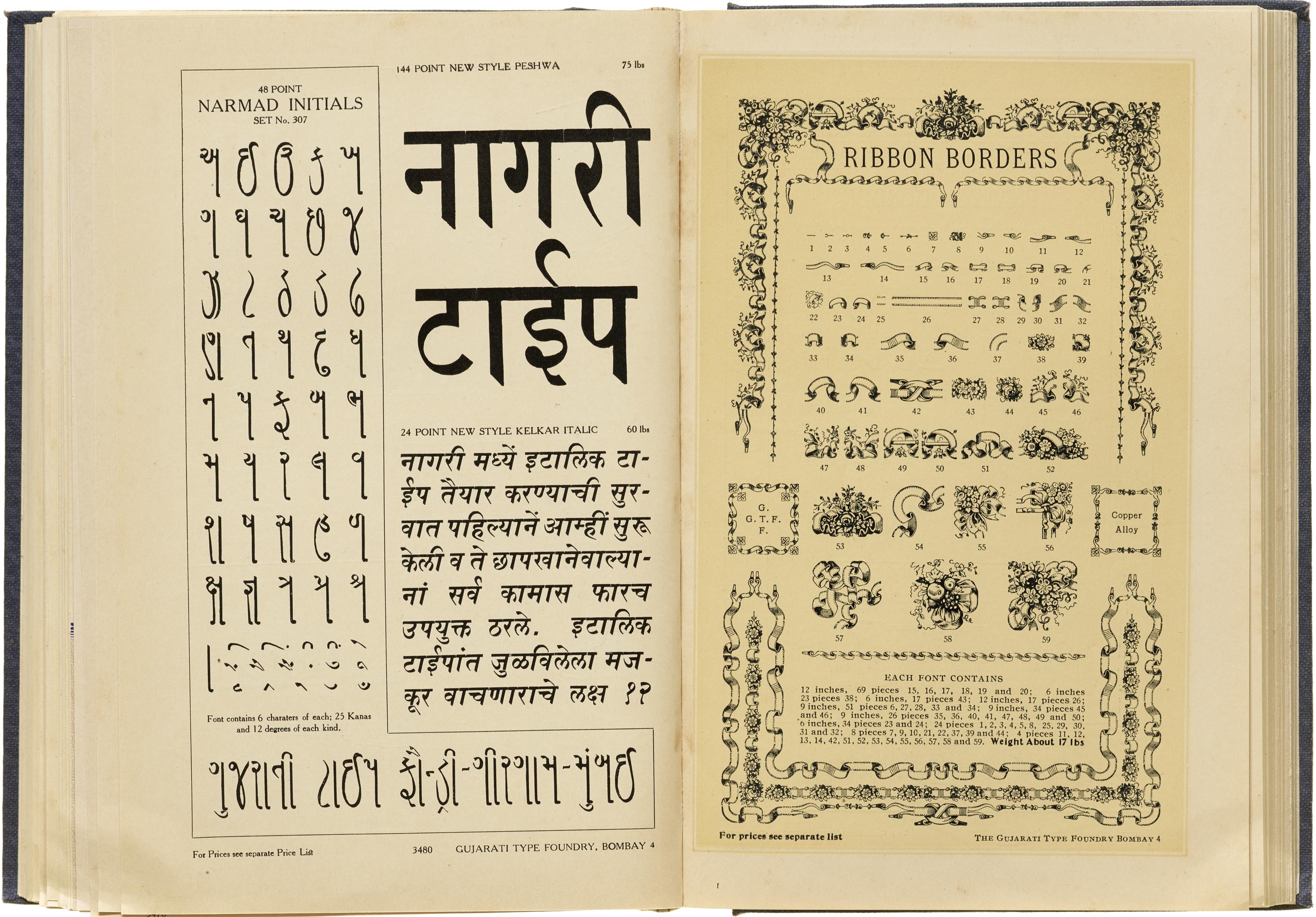
Gujarati Type Foundry’s 1937
Specimen Book
A catalog from the Gujarati Type Foundry offers a comprehensive glimpse into India's rich typographic heritage of the early 20th century. Apart from an extensive array of type styles across multiple scripts, it also includes ornaments, decorative borders, and an illustrated glossary detailing printing tools and technologies of the era.

How Type Traveled Across Nations
and Foundries
Our Indian correspondent Tanya George delves into the historical journey of typeface designs during the metal type era. She investigates how identical or similar typefaces appeared in specimens from different foundries, often under varying names. This phenomenon illustrates the global exchange and adaptation of type designs.
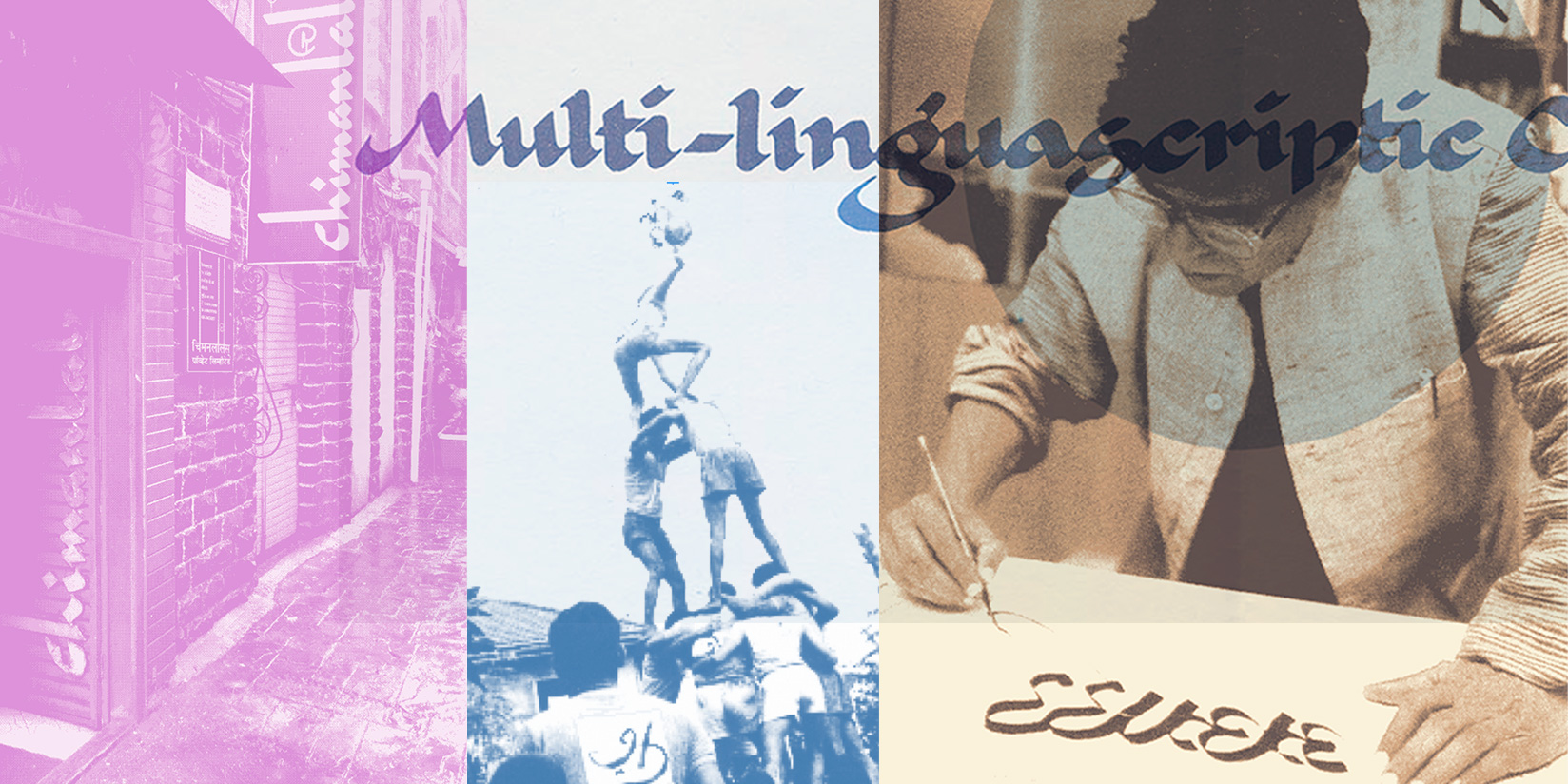
The Multilinguascriptic Life of
R. K. Joshi
Meet the pioneering Indian typographer, calligrapher, and poet who championed Indian scripts through experimental calligraphy, concrete poetry in Marathi, and digital type design. Joshi's work bridged traditional and modern forms, promoting multilingualism and cultural identity.
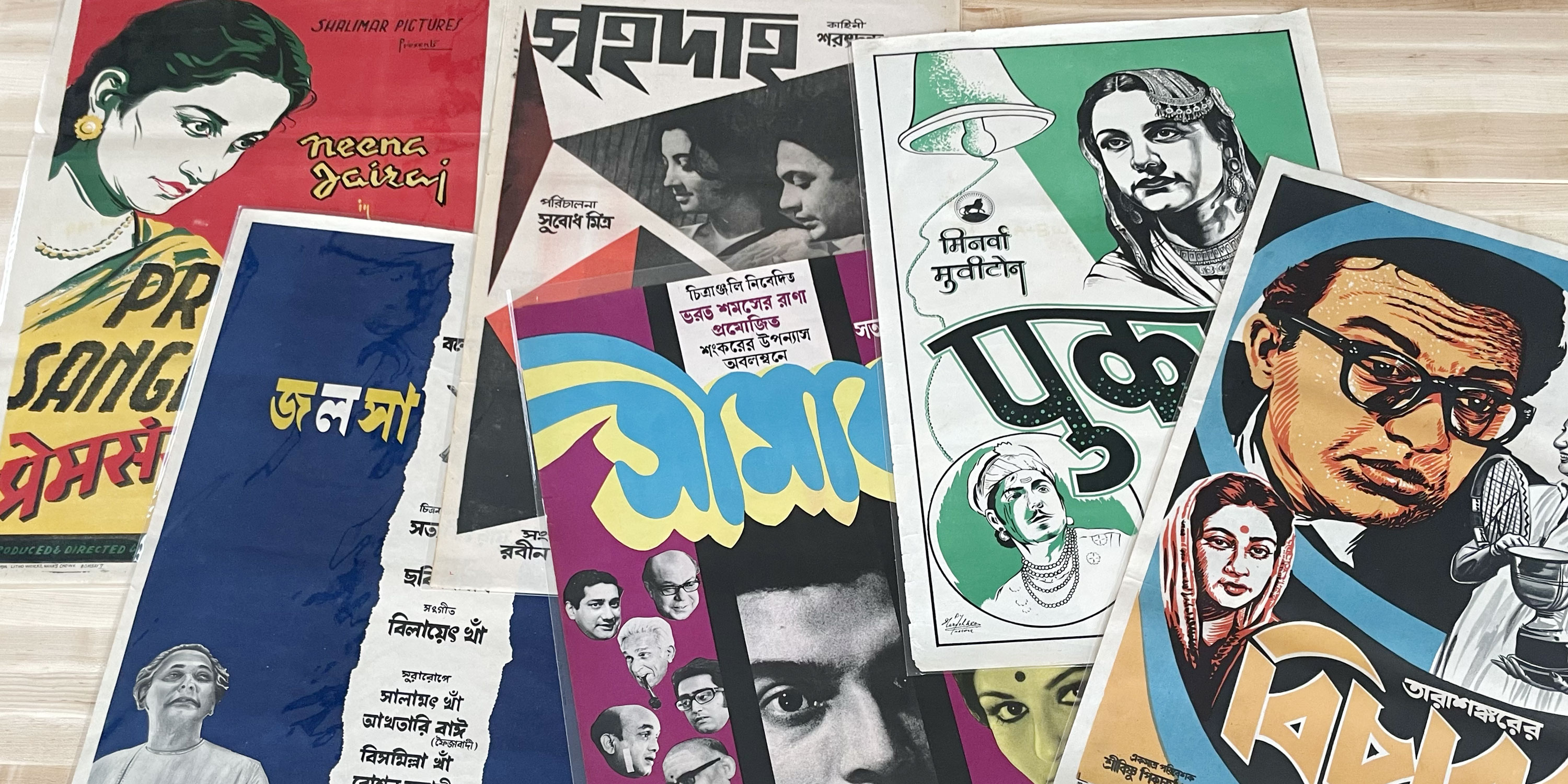
Indian Movie Posters
Explore India’s diverse cinematic industries through a curated collection of multilingual film posters. These prints showcase expressive lettering across scripts like Bengali, Devanagari, Urdu, and Telugu, highlighting the experimental potential of Indic scripts in visual storytelling.
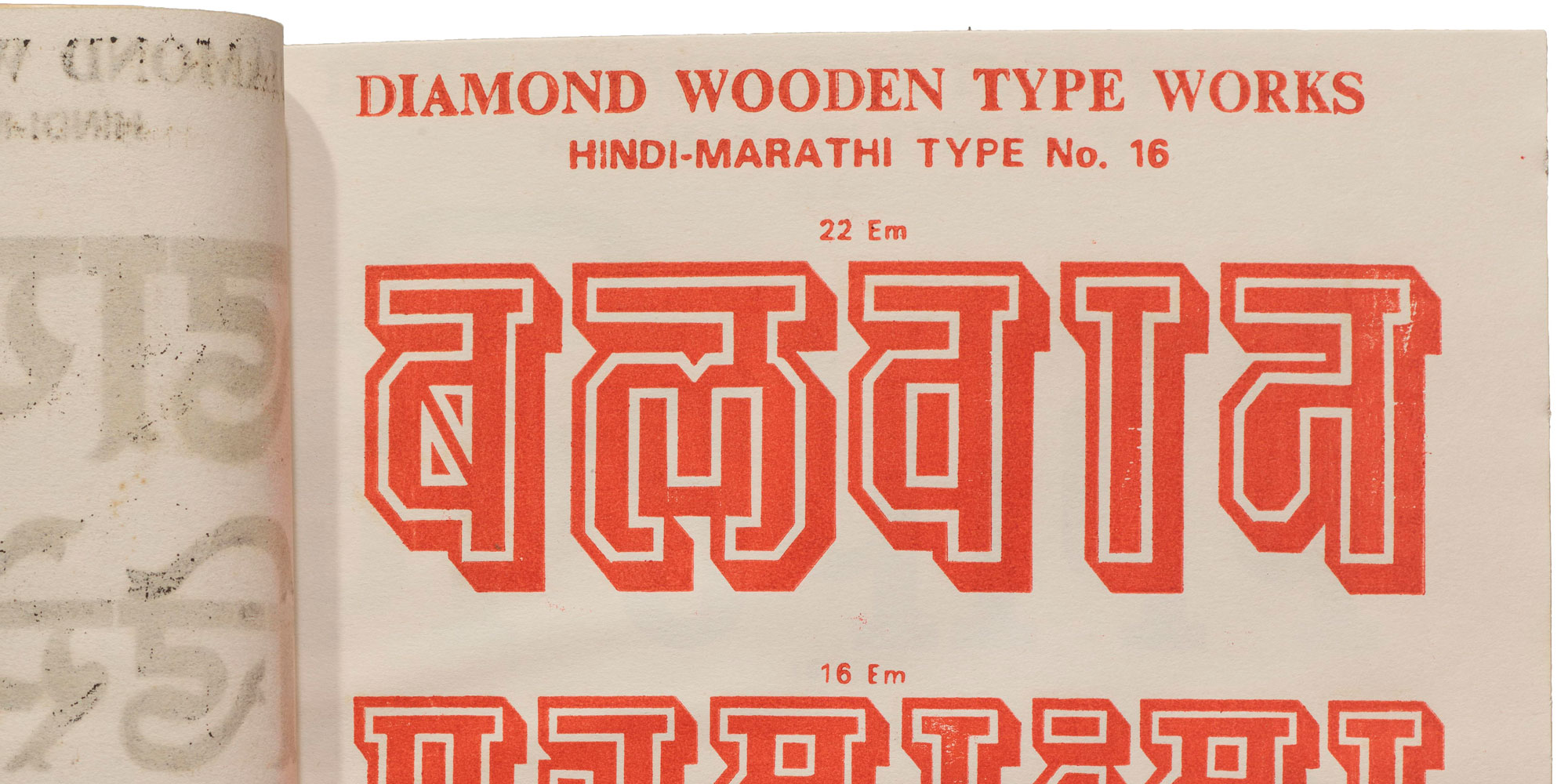
Diamond Wooden Type Works
A peculiar 1975 catalog from Meerut, India, showcases type specimens for Latin, Gujarati, Devanagari, Bengali, and Odia scripts. Hand-bound and modest in presentation, the catalog reflects India’s typographic traditions and innovation, and the enduring legacy of wood type manufacturing in the region.
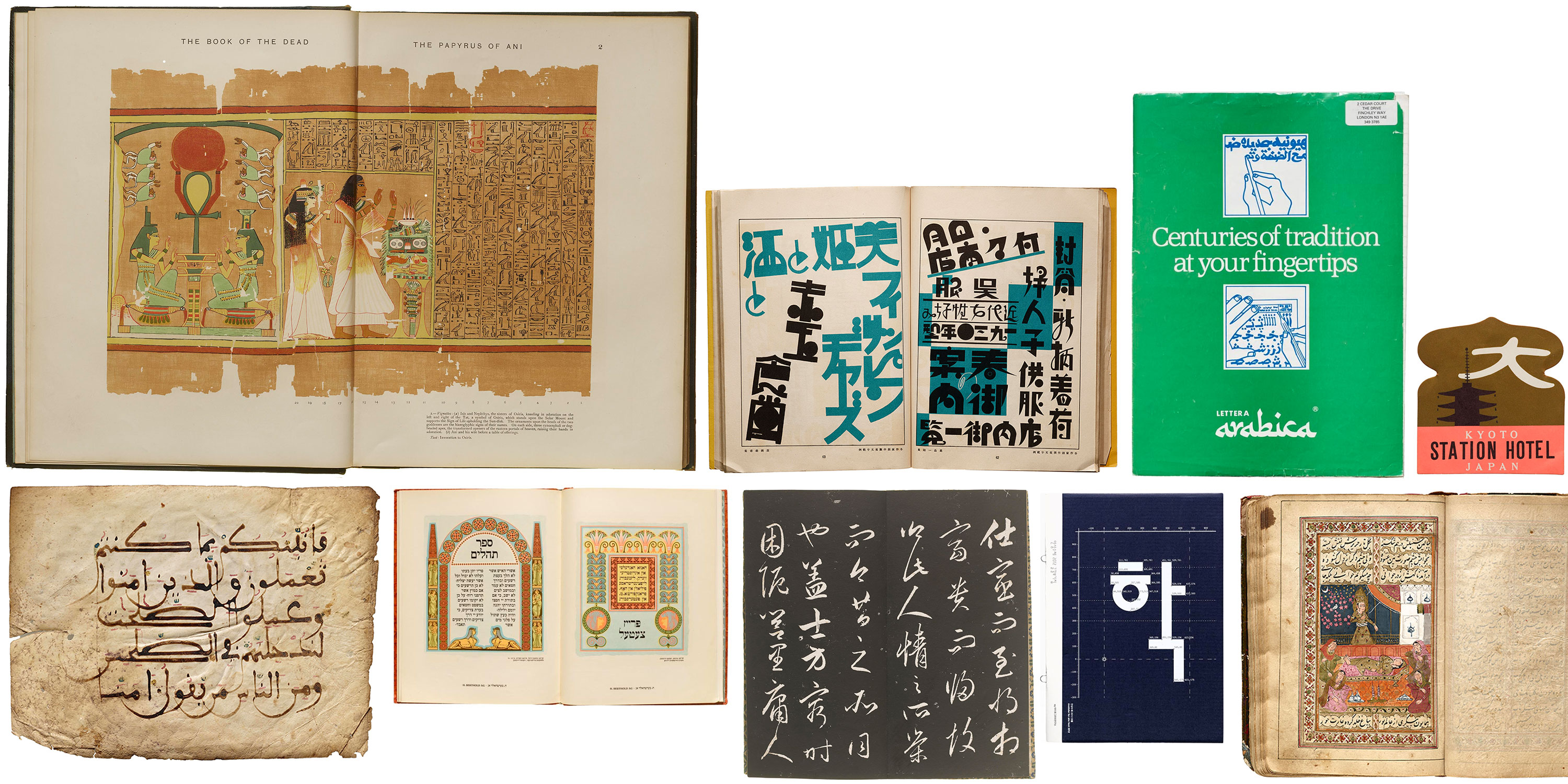
Type History Toolkit, Part 2:
De-Centering the Latin Letter in
Design Education
Activist, educator, and Archive docent Sabiha Basrai advocates for a broader, more inclusive approach to typography education. She emphasizes the importance of integrating more writing systems into design curricula, highlighting resources in the collection to support this inclusive pedagogy.
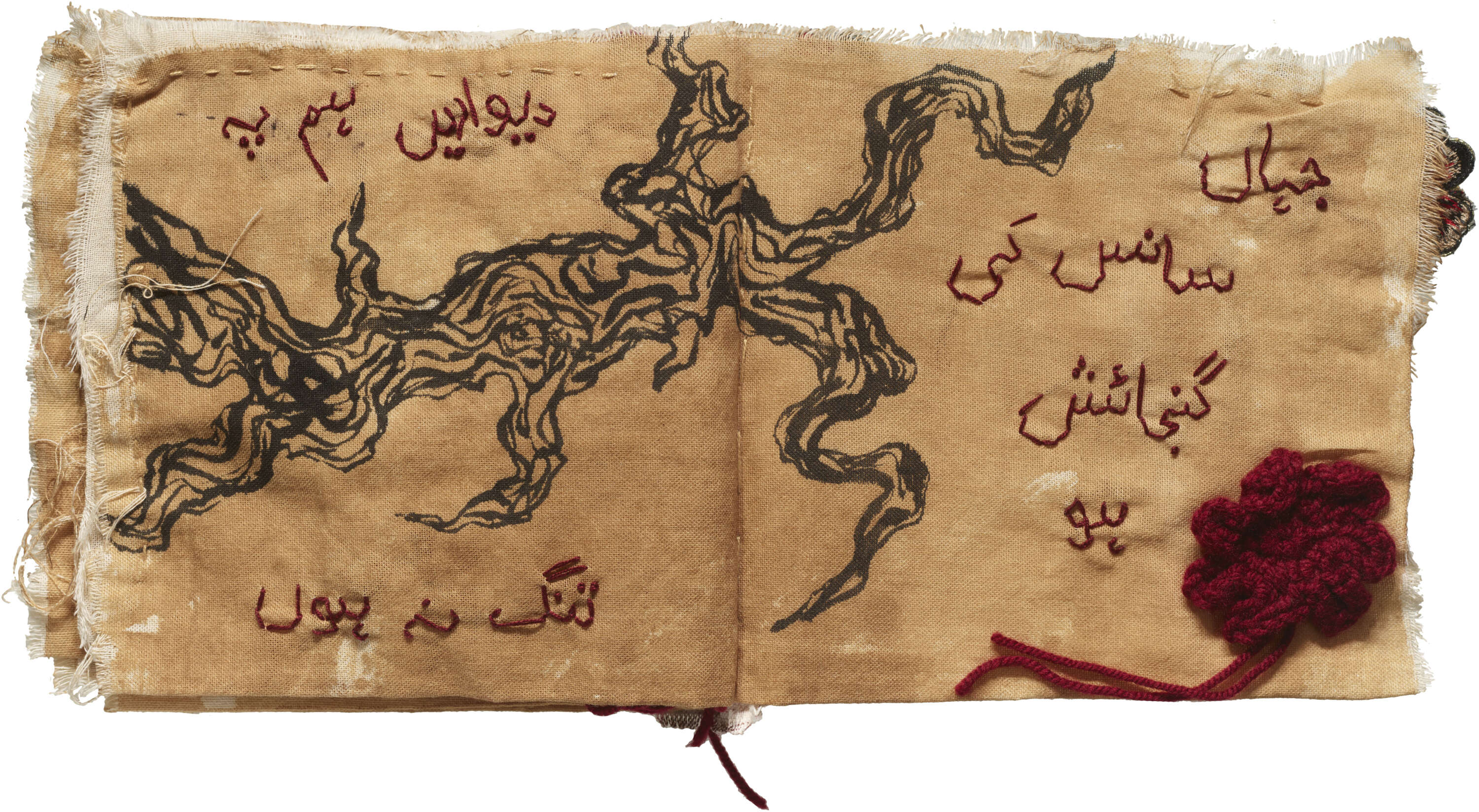
Threading Letters
Delve into the historical interplay between textiles and letterforms and explore how embroidery, weaving, and other fabric arts have incorporated text, including a handmade book by Pakistani artist Halah Khan.

Works by Priya Pereira
The prominent Indian book artist and co-founder of Pixie Bks creates a diverse range of works that blend visual storytelling with tactile design. The Archive holds several items by Pereira, including a greeting card with ખુશ રહો (Gujarati for Stay Happy) embossed in metal, Imposition, The Other Side of ABC, and a perpetual Solar Year Calendar.
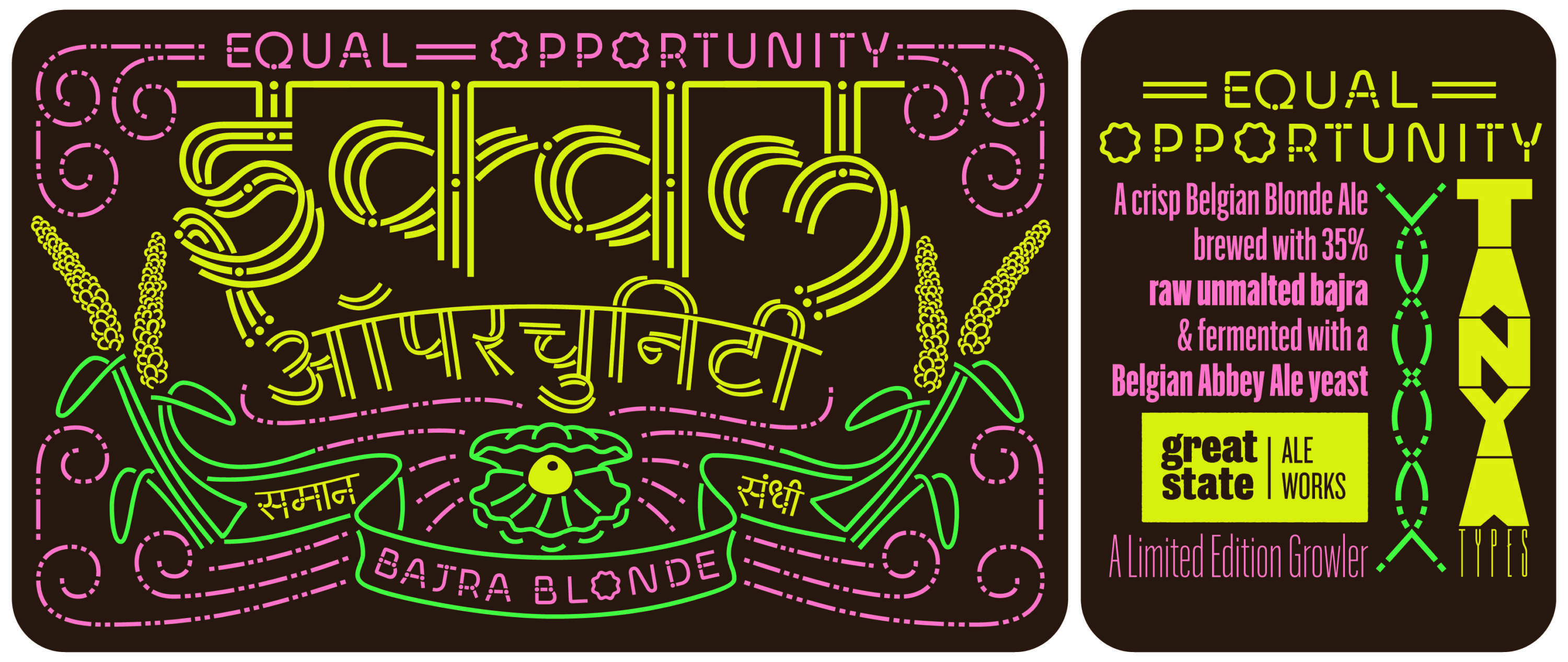
Multilingual Beer Label
Tanya George’s label design for a millet-based blonde ale, is a fusion of typography, and cultural storytelling. The label features the beer’s name, इक्वल ऑपरचुनिटी (Equal Opportunity), hand lettered in Marathi to reflect the sourcing of the grain from farmers in the Indian state of Maharashtra, and is screen printed by Pritam Arts in Mumbai.
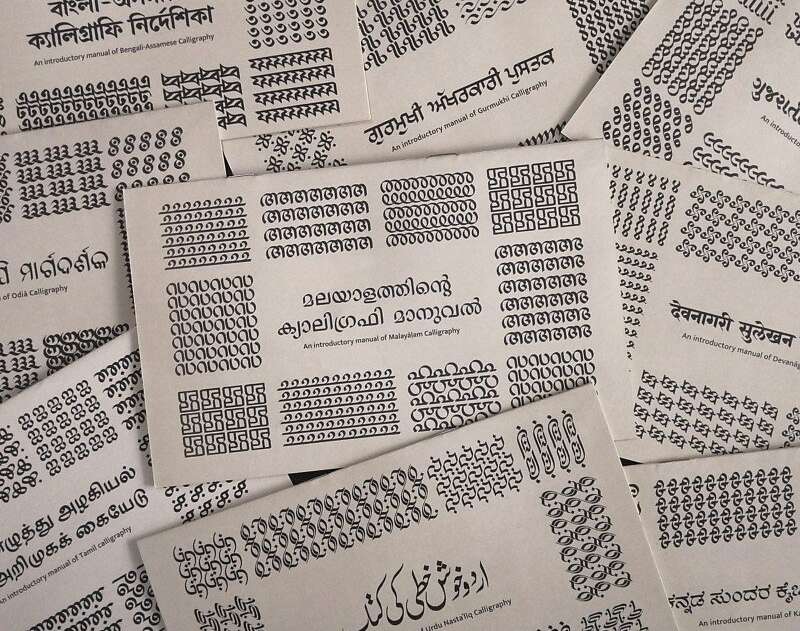
Aksharaya Calligraphy Manuals
Bilingual instructional guides introduce learners to the art of calligraphy across ten Indian scripts: Devanagari, Urdu, Gujarati, Gurmukhi, Kannada, Bangla, Telugu, Tamil, Malayalam, and Odia. Developed in collaboration with expert calligraphers and script specialists, each manual provides comprehensive guidance on tools, basic strokes, letterforms, vowel signs, numerals, and even complex conjuncts. Alongside clear, step-by-step instructions, the manuals include terminology, sample words, and full sentences, making them both practical and insightful.
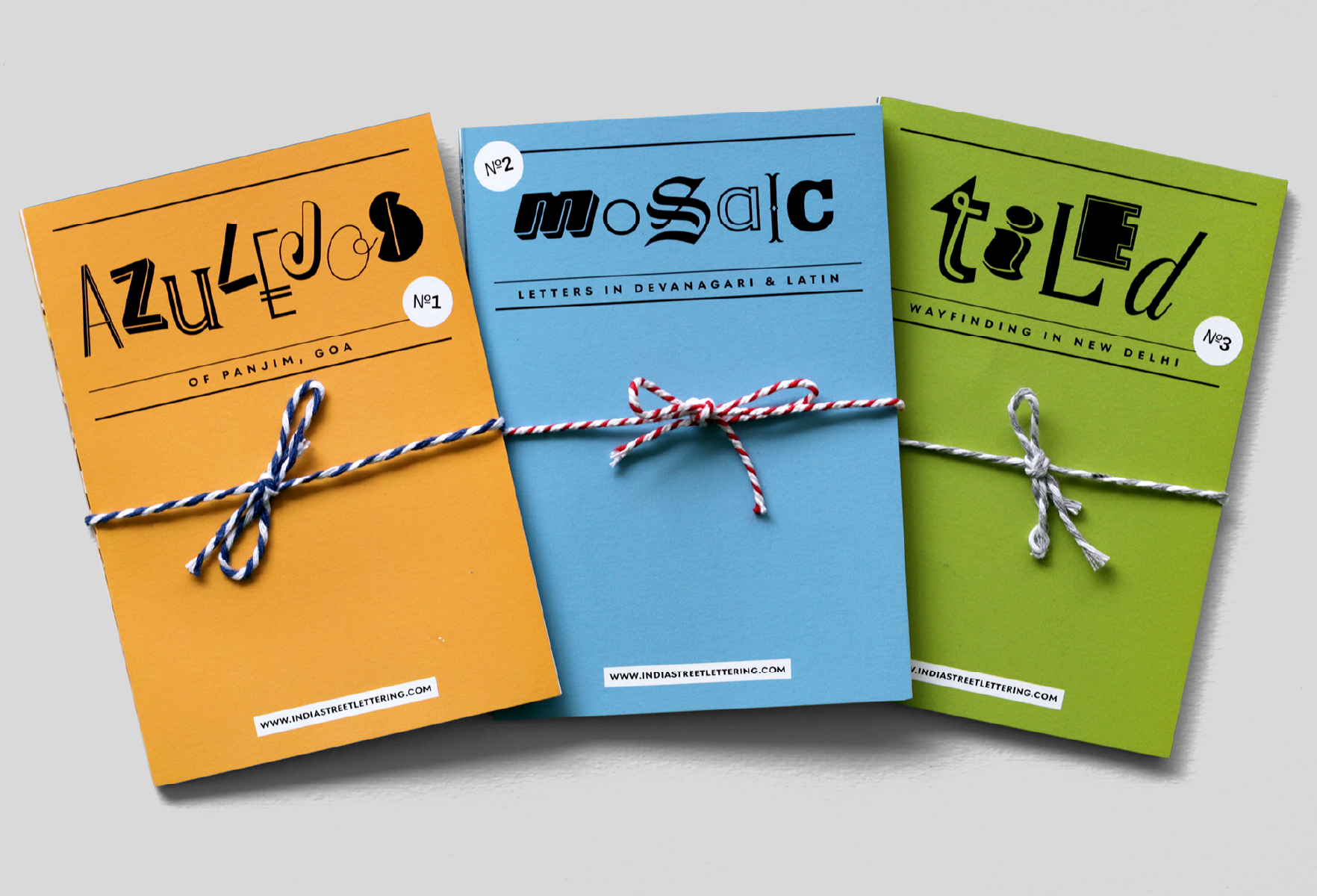
India Street Lettering zines
This zine series by designer Pooja Saxena, celebrates the vibrant diversity of letterforms found in public signage across India, with editions on azulejos in Panjim, mosaic lettering in Devanagari and Latin, and tiled wayfinding signs from New Delhi. Together, they offer a playful and insightful lens into the everyday typography that surrounds us.

Street Type Archive Zines
Street Type Archive, founded by Aashim Tyagi in 2009, documents how type, design, and culture shape the identity of places. Recently published poster zines highlight various towns and cities in India, but isn’t limited to the country.
Videos related to South Asian scripts
Table of South Asian Objects
The Online Archive lets you explore Letterform Archive’s physical collection from anywhere in the world. This Table features a variety of specimen books, posters, and other objects from India and Sri Lanka. You can also request an online tour that will give you a curated look into our South Asian collection.
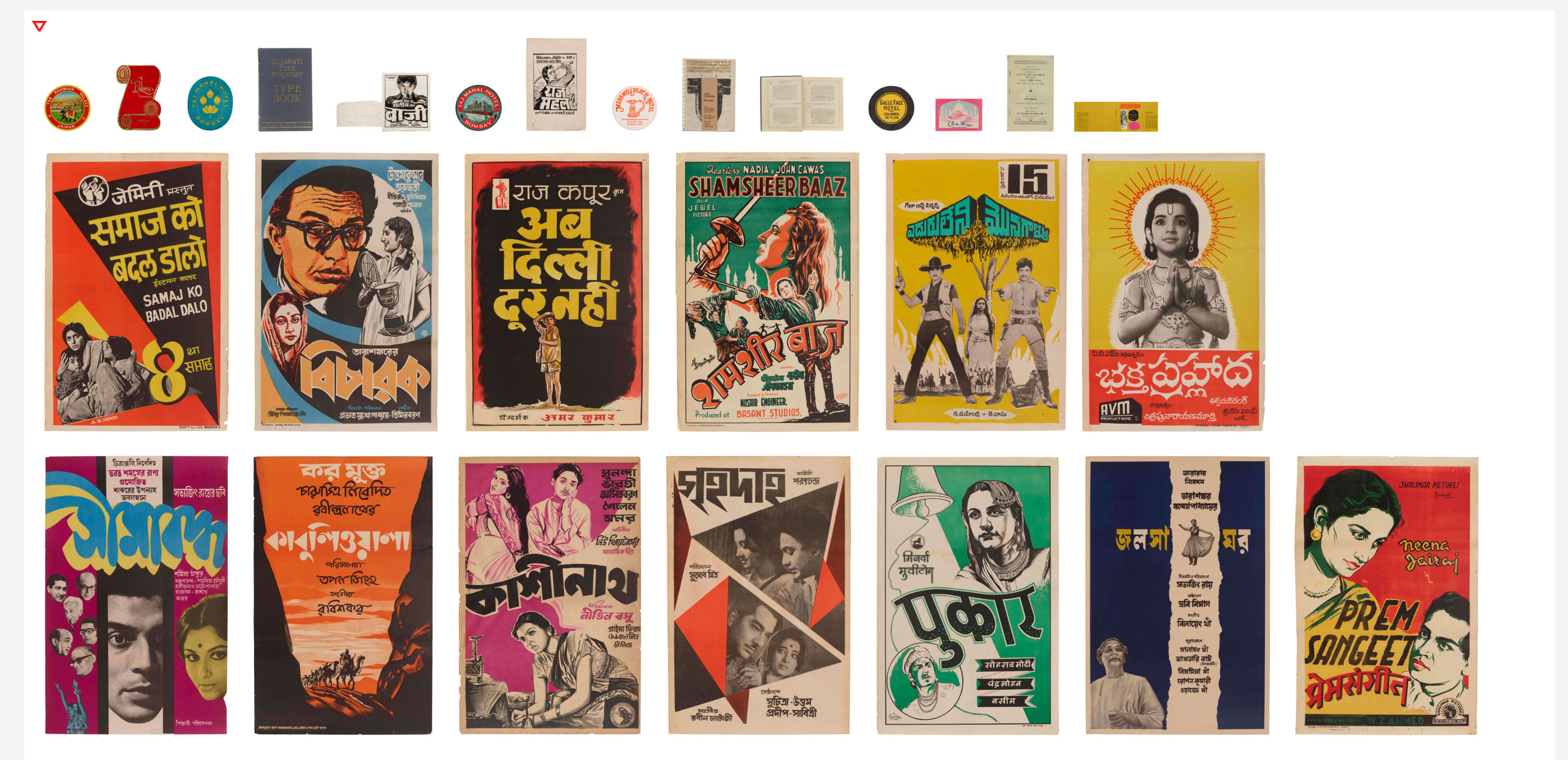
Resources on World Writing Systems
- The World’s Writing Systems
- Explore the world of Unicode
- An extensive writing systems map.
- Atlas of Endangered Alphabets
- Devanagari – The Makings of a National Character
- World Language Map
